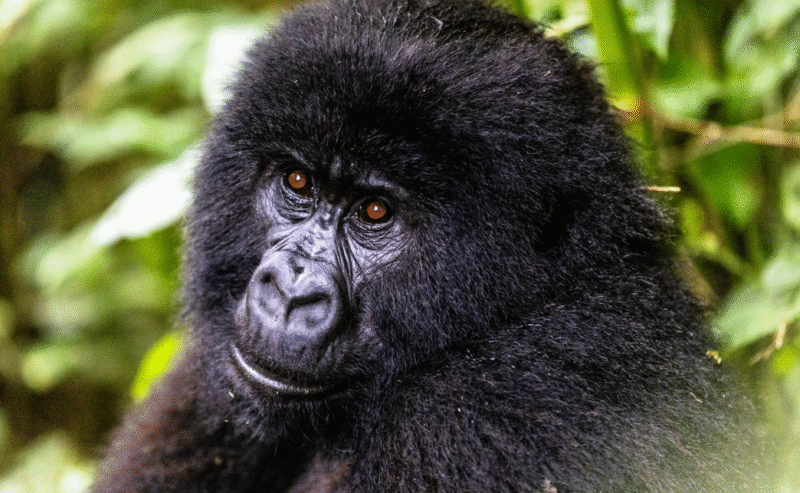
Support Virunga this Giving Season >
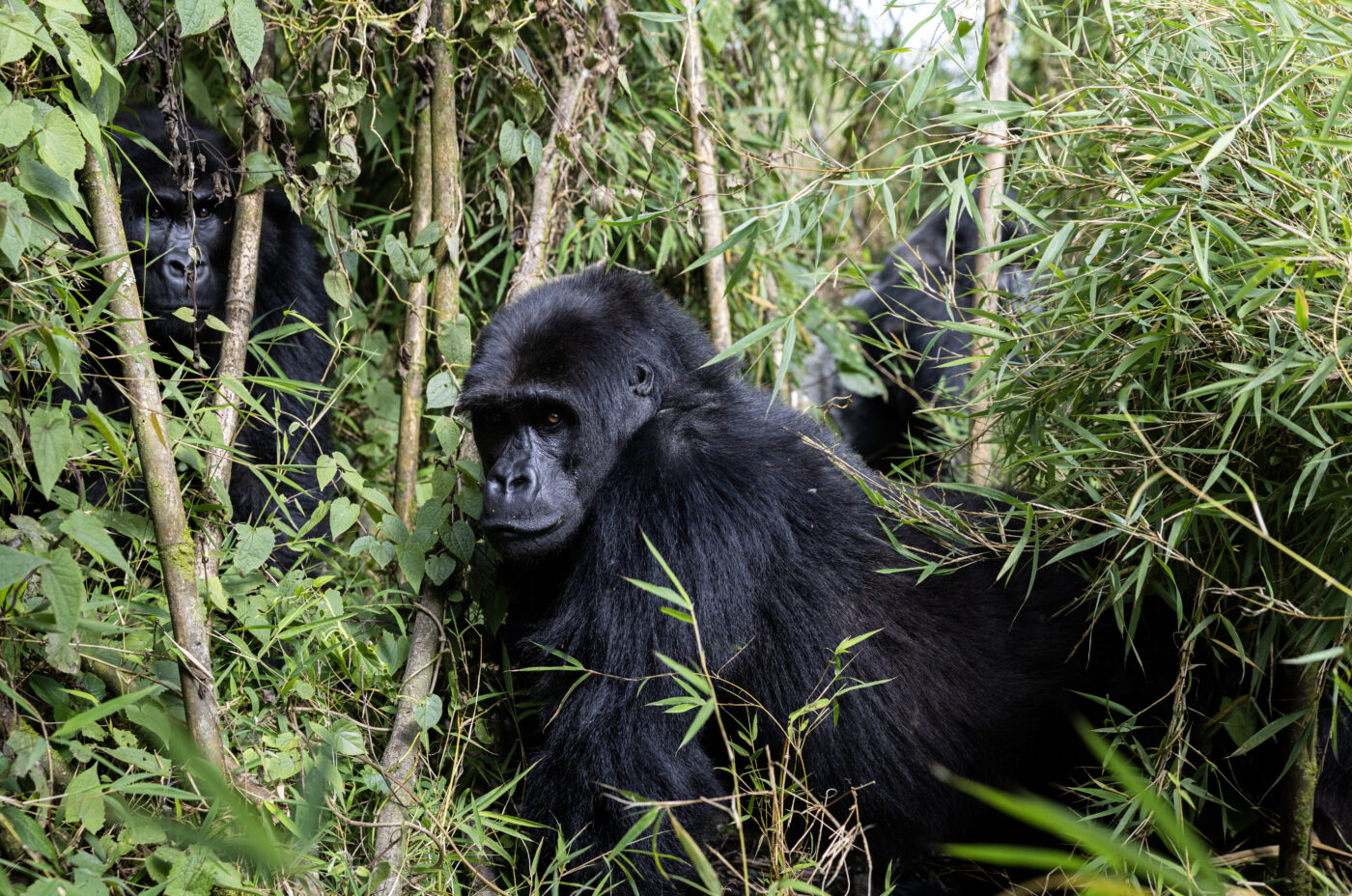
Grauer Gorilla's of Virunga National Park
The critically endangered eastern lowland gorilla, or Grauer’s gorilla, is a subspecies of the eastern gorilla (the other being its cousin the mountain gorilla), which resides exclusively in eastern Congo’s tropical rainforests. Its habitat is continually threatened, meaning the world’s largest primate is being pushed into an ever shrinking range.
It now occupies just 13% of its historical range, and it’s estimated that the population has decreased by more than 50% since the mid-90s.
The lowland gorillas of Virunga live in a small, isolated forest on Mount Tshiaberimu, just 77 square km in size, situated northwest of Lake Edward.
Eastern lowland gorillas typically reside in lowland rainforests, but can also live in dense montane forests as long as the climate is still tropical. It is also possible for them to inhabit swampland if the right vegetation grows there. As a consequence of armed conflict and illegal resource exploitation, the subspecies’ range is rapidly decreasing.
Eastern lowland gorillas, like other subspecies of gorilla, eat up to 18 kg of vegetation a day. Since their diet is rich in moisture, they rarely need to drink any water.
They supplement their diets with very small servings of insects, such as ants and termites.
While mothers care directly for infants, who take 8.5 months to develop in the womb, the powerful silverback, the group’s dominant male, offers protection from external threats. He also takes time to play with his offspring, aside from leading the group of up to 30 individuals to nesting and feeding sites.
The dominant male within a troop is known as silverback, because of the swathe of silver hair which blankets its rear when he reaches sexual maturity at around twelve years of age. The fur of females and non-mature males is dark and shorter than that of mountain gorillas.
They have long arms and their thumbs extend further than their fingers.
Of the four subspecies of gorilla, the eastern lowland is physically the largest. They have stocky bodies, large hands and bulky skulls compared to the rest of the body. On average, males grow to be 359 pounds (163 kg) and 5.5 feet tall (1.69 m), with females weighing in at 178 pounds (81 kg) and reaching 5.2 feet (1.6 m).
The eastern lowland gorillas of Mount Tshiaberimu in Virunga National Park remain critically endangered, threatened by ongoing habitat loss and human activity. As of October 2024, the isolated population had dwindled to just eight individuals.
In a major conservation milestone, four rescued female gorillas from GRACE (Gorilla Rehabilitation and Conservation Education Center) were reintroduced to the area in December 2024. This effort offered a vital opportunity to strengthen the group and prevent local extinction. With their arrival, the population in Mount Tshiaberimu has increased to eleven.
The long-term survival of these gorillas now depends on continued protection from Virunga’s field teams, close collaboration with nearby communities, and the ongoing support of dedicated conservation partners.
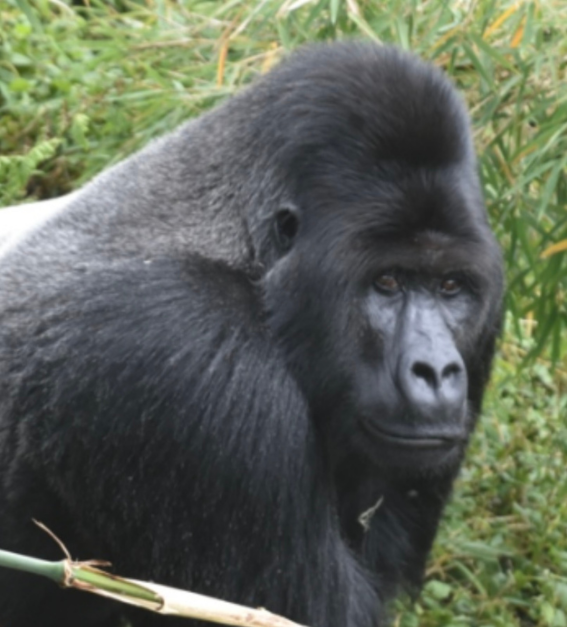
Silverback of the Kipura Family

Silverback of the Kipura Family
Silverback Mwasa is the current leader of the Kipura family. He became the dominant silverback in 2017 following the death of the previous troop leader, Kambula. Mwasa is short for Mwasananyinya — a name from the Nande local dialect meaning “coming with his mother.” Mwasa’s mother was originally from the Lusenge clan but moved to the Kipura clan while pregnant with Nzanzu, the dominant male of the Lusenge clan. Photo by Gorilla Doctors.
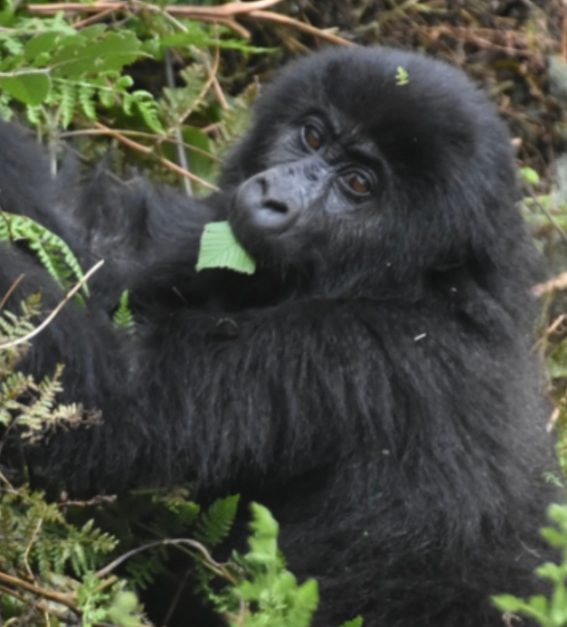
Juvenile of the Kipura Family

Juvenile of the Kipura Family
Kavango is the youngest baby, whose sex remains unknown. Born in January 2022, nine months after his mother immigrated to the Kipura family, he was named in honor of the great customary chief of the "Bashu" chiefdom, who was the first chief to see the gorillas on Mount Tshiaberimu. Photo by Gorilla Doctors.
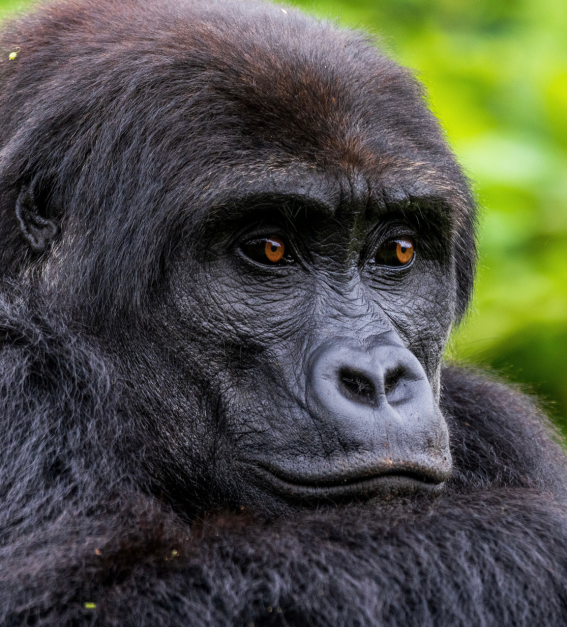
Female introduced to the Kipura Family

Female introduced to the Kipura Family
Ndjingala, a 16-year-old eastern lowland gorilla, is pictured here at the GRACE sanctuary. Rescued from the illegal wildlife trade in 2010, she was rehabilitated at GRACE in eastern DRC. In December 2024, she was successfully reintroduced into the wild in Virunga National Park. Photo by Bobby Neptune.
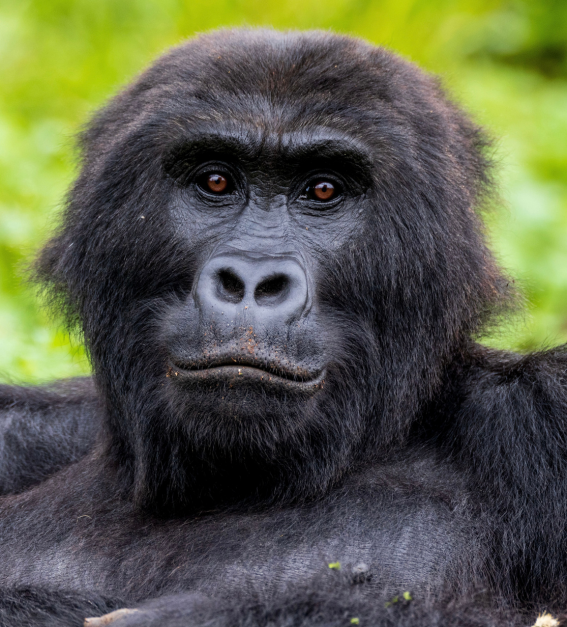
Female introduced to the Kipura Family

Female introduced to the Kipura Family
Mapendo, a 21-year-old eastern lowland gorilla, is pictured here at the GRACE sanctuary. Rescued from the illegal wildlife trade in 2007, she was rehabilitated at GRACE in eastern DRC. In December 2024, Mapendo was reintroduced to the wild in Virunga National Park. Photo by Bobby Neptune.
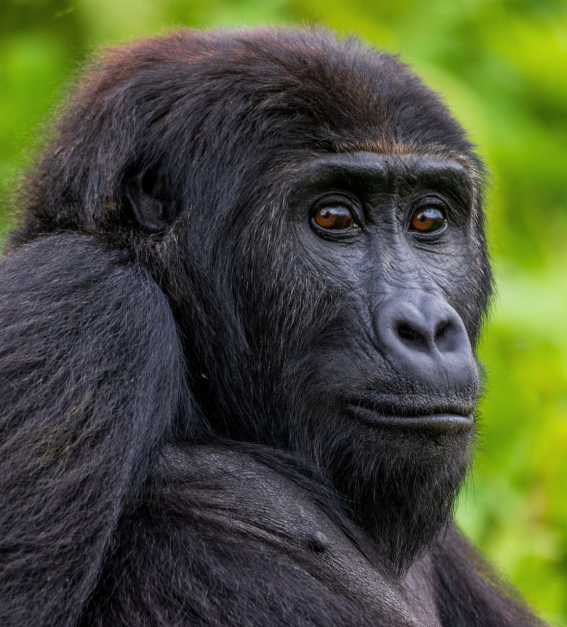
Female introduced to the Kipura Family

Female introduced to the Kipura Family
Lulingu, a 10-year-old eastern lowland gorilla, was rescued from the illegal wildlife trade in 2016 and cared for at the GRACE sanctuary in eastern DRC. In December 2024, she was reintroduced to the wild in Virunga National Park. Photo by Bobby Neptune.
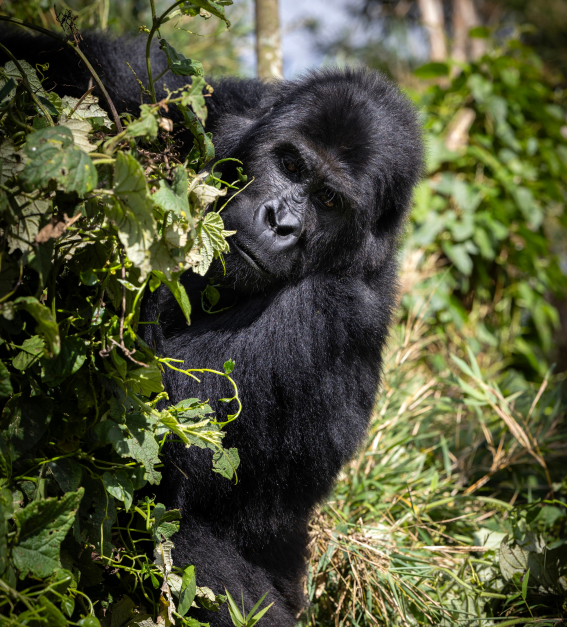
Female introduced to the Kipura Family

Female introduced to the Kipura Family
Isangi is an eastern lowland gorilla rescued as an infant from the illegal wildlife trade and rehabilitated at the GRACE sanctuary in eastern DRC. In December 2024, she was released into the wild in Virunga National Park, joining Kipura’s family group. Photo by Brent Stirton / Getty Images.
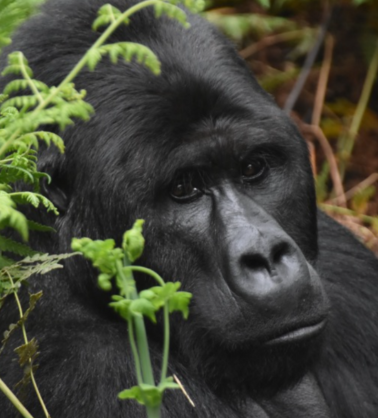
Silverback of the Katsabara Family

Silverback of the Katsabara Family
Katsabara, once a solitary gorilla, now leads one of two eastern lowland gorilla families on Mount Tshiaberimu. Originally from the Lusenge family, he chose solitude in 2004, a common behavior among male lowland gorillas. Photo by Gorilla Doctors.
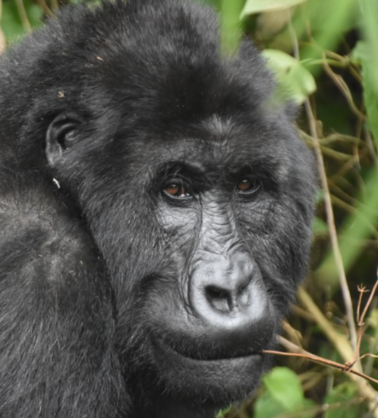
Female of the Katsabara Family

Female of the Katsabara Family
Mukokya, whose name means “a welcoming person” in Kinande, migrated from the Kipura family to the Katsabara family in 2021. Although she is around 24 years old, Mukokya has never given birth. However, she has shown her innate motherly instincts by caring for an abandoned juvenile named Espoir. Photo by Gorilla Doctors.
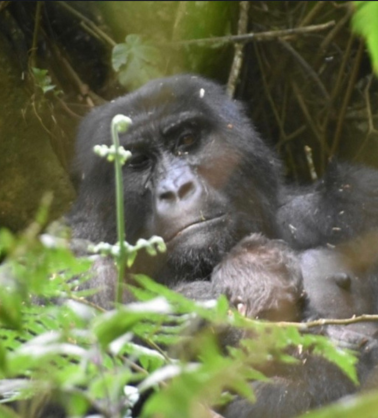
Female and baby of the Katsabara Family

Female and baby of the Katsabara Family
Her name means “there is no peace,” reflecting the period of instability and tension during which she was born in 2012. Originally from the Katsabara family, where she still lives today, Ndekesiri gave birth to a new infant in October 2024, whose sex is yet to be determined — bringing the family size to five. This birth is an encouraging sign for the conservation of this critically endangered species. Photo by Gorilla Doctors.
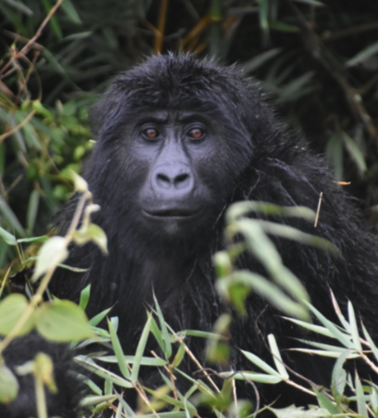
Juvenile of the Katsabara Family

Juvenile of the Katsabara Family
Espoir is a female juvenile eastern lowland gorilla, born in 2019 to the Katsabara family. Her fortuitous arrival brought a sense of hope — the meaning of her French name — easing fears for the future of the local population due to the scarcity of females. Another fortunate event was Espoir’s adoption by Mukokya after her birth mother abandoned her. Photo by Gorilla Doctors.
1996
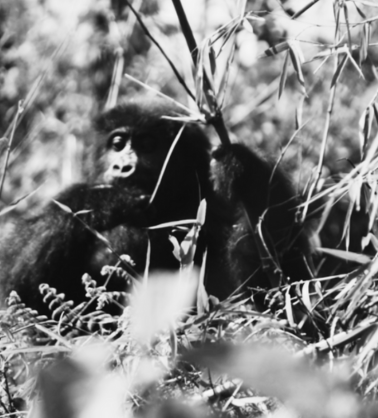
Cornet d’Elzius provided the first population estimate, referencing a group of 31 individuals originally discovered in 1958.
2001
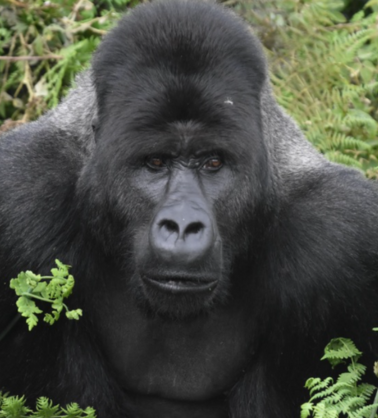
According to the trackers’ collective memory, a major split occurred in 2001, resulting in the formation of two new groups: Kipura (4 individuals) and Lusenge (11 individuals).
2003
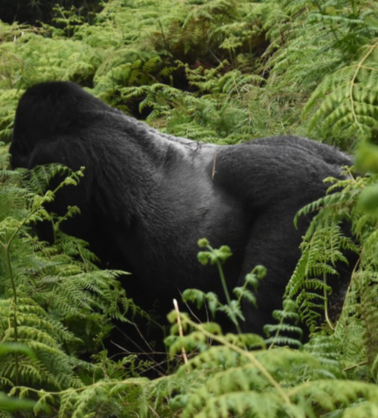
In September 2003, four individuals split from the Lusenge group to form the Katsabara group, led by a dominant male named Katsabara. Following the death of Lusenge’s silverback, the remaining members either became solitary or joined the Kipura or Katsabara groups.
2008
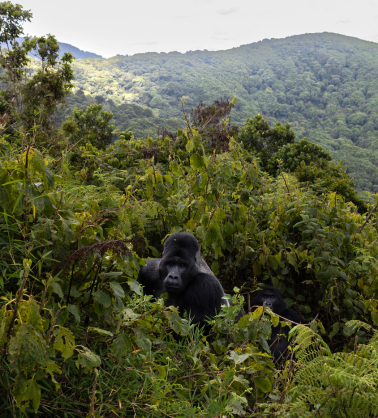
Following repeated militia attacks, park authorities were forced to evacuate the area. Militias subsequently established a presence, and mining activities intensified.
2010
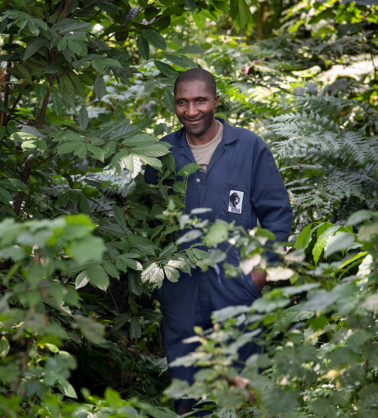
Despite persistent challenges in the area, Gorilla Doctors veterinarians have managed to continue monitoring the gorilla population. In 2010, six individuals were under observation, decreasing to five by 2018, with two in the Kipura group and three in the Katsabara group.
2021
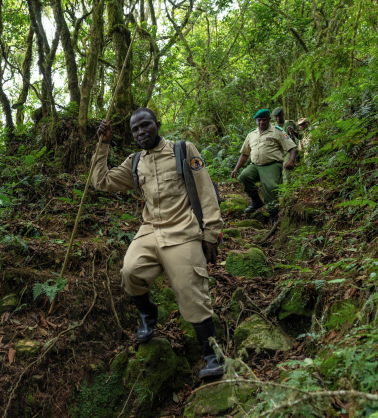
A dedicated gorilla monitoring program begins at Mt. Tshiaberimu, led by Virunga Rangers, community trackers, and Gorilla Doctors. The initiative provides vital health and behavioral data on the critically endangered population.
2023
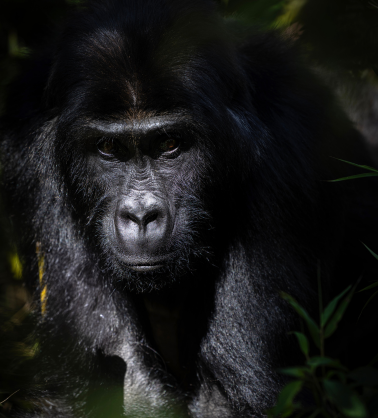
Findings from years of monitoring confirm the population’s genetic isolation and lack of long-term viability. Conservation partners and experts agree that introducing gorillas from an external population is critical to prevent extinction and restore genetic diversity.
2024

In October 2024, a baby gorilla has been born into the Katsabara family, bringing their group to five individuals and raising the total number of eastern lowland gorillas in the Tshiaberimu area to eight. This birth marks a promising step forward for the conservation of this critically endangered species. The infant's mother, Ndekesiri, remains closely protective of her newborn, and the baby's sex is yet to be confirmed.
2024
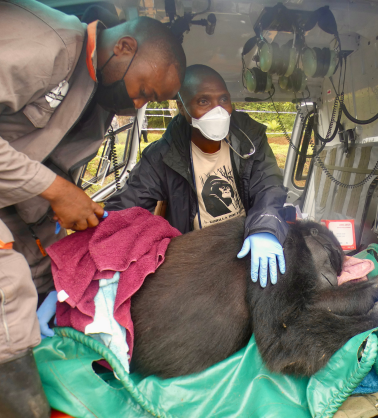
In October 2024, in the lead-up to the reintroduction of four female Grauer’s gorillas, final preparations were made at Mt. Tshiaberimu, including checks on medical supplies and equipment. Team members from Virunga, GRACE, and partner organizations coordinated closely to ensure a safe and smooth transfer. On October 22, the gorillas were successfully transported from GRACE to Mt. Tshiaberimu by helicopter - each accompanied by a veterinary specialist. This marked a major milestone in efforts to restore the local gorilla population.
2024
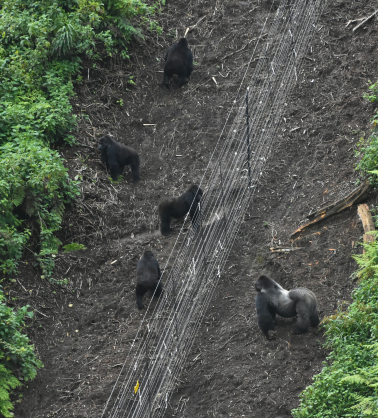
In November 2024, the four reintroduced females begin adjusting to their new environment after being transferred to a spacious transitional enclosure, where they explore local vegetation and adapt to the cooler mountain climate. Their health remains stable, and monitoring continues. Mapendo emerges as the lead female. Meanwhile, wild silverback Mwasa, leader of the Kipura group, discovers the females nearby. Though separated by a fence, mutual interest grows - especially from the females, who respond to his vocalizations and even attempt to reach him.
2024
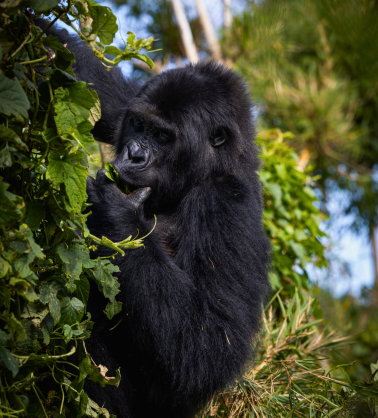
In December 2024, forty-two days after the relocation, following positive interactions between the silverback and the four females, the fence surrounding the reintegration facility was taken down, allowing the gorillas to be released into the wild. In the weeks following their release, near-daily health monitoring by Dr. Cédric confirmed that all four reintroduced females are adapting well to their new life in the wild.
2025
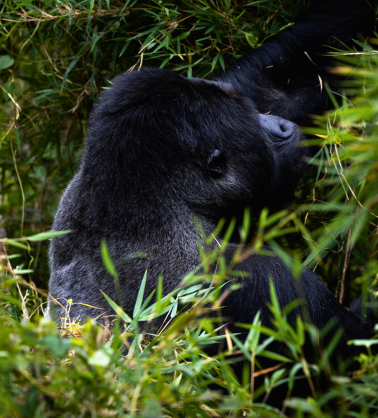
In March 2025, over a three-month period, Dr. Cédric conducted 30 health assessments of the two gorilla groups in the Mount Tshiaberimu region—Kipura and Katsabara. All 11 Grauer’s gorillas remained in good health, with no veterinary interventions required. The four reintroduced females continue to thrive within the Kipura group, led by silverback Mwasa. They are frequently observed engaging in natural behaviors such as foraging, resting, grooming, and moving together through the forest. A particularly exciting moment occurred when Mwasa and Lulingu were observed mating—an encouraging sign for the future of this critically endangered population.
1996-2010
Early History of the Mt. Tshiaberimu Population
2021-2025
From Monitoring to Reinforcement
1996

Cornet d’Elzius provided the first population estimate, referencing a group of 31 individuals originally discovered in 1958.
2001

According to the trackers’ collective memory, a major split occurred in 2001, resulting in the formation of two new groups: Kipura (4 individuals) and Lusenge (11 individuals).
2003

In September 2003, four individuals split from the Lusenge group to form the Katsabara group, led by a dominant male named Katsabara. Following the death of Lusenge’s silverback, the remaining members either became solitary or joined the Kipura or Katsabara groups.
2008

Following repeated militia attacks, park authorities were forced to evacuate the area. Militias subsequently established a presence, and mining activities intensified.
2010

Despite persistent challenges in the area, Gorilla Doctors veterinarians have managed to continue monitoring the gorilla population. In 2010, six individuals were under observation, decreasing to five by 2018, with two in the Kipura group and three in the Katsabara group.
2021

A dedicated gorilla monitoring program begins at Mt. Tshiaberimu, led by Virunga Rangers, community trackers, and Gorilla Doctors. The initiative provides vital health and behavioral data on the critically endangered population.
2023

Findings from years of monitoring confirm the population’s genetic isolation and lack of long-term viability. Conservation partners and experts agree that introducing gorillas from an external population is critical to prevent extinction and restore genetic diversity.
2024

In October 2024, a baby gorilla has been born into the Katsabara family, bringing their group to five individuals and raising the total number of eastern lowland gorillas in the Tshiaberimu area to eight. This birth marks a promising step forward for the conservation of this critically endangered species. The infant's mother, Ndekesiri, remains closely protective of her newborn, and the baby's sex is yet to be confirmed.
2024

In October 2024, in the lead-up to the reintroduction of four female Grauer’s gorillas, final preparations were made at Mt. Tshiaberimu, including checks on medical supplies and equipment. Team members from Virunga, GRACE, and partner organizations coordinated closely to ensure a safe and smooth transfer. On October 22, the gorillas were successfully transported from GRACE to Mt. Tshiaberimu by helicopter - each accompanied by a veterinary specialist. This marked a major milestone in efforts to restore the local gorilla population.
2024

In November 2024, the four reintroduced females begin adjusting to their new environment after being transferred to a spacious transitional enclosure, where they explore local vegetation and adapt to the cooler mountain climate. Their health remains stable, and monitoring continues. Mapendo emerges as the lead female. Meanwhile, wild silverback Mwasa, leader of the Kipura group, discovers the females nearby. Though separated by a fence, mutual interest grows - especially from the females, who respond to his vocalizations and even attempt to reach him.
2024

In December 2024, forty-two days after the relocation, following positive interactions between the silverback and the four females, the fence surrounding the reintegration facility was taken down, allowing the gorillas to be released into the wild. In the weeks following their release, near-daily health monitoring by Dr. Cédric confirmed that all four reintroduced females are adapting well to their new life in the wild.
2025

In March 2025, over a three-month period, Dr. Cédric conducted 30 health assessments of the two gorilla groups in the Mount Tshiaberimu region—Kipura and Katsabara. All 11 Grauer’s gorillas remained in good health, with no veterinary interventions required. The four reintroduced females continue to thrive within the Kipura group, led by silverback Mwasa. They are frequently observed engaging in natural behaviors such as foraging, resting, grooming, and moving together through the forest. A particularly exciting moment occurred when Mwasa and Lulingu were observed mating—an encouraging sign for the future of this critically endangered population.
1996

Cornet d’Elzius provided the first population estimate, referencing a group of 31 individuals originally discovered in 1958.
2001

According to the trackers’ collective memory, a major split occurred in 2001, resulting in the formation of two new groups: Kipura (4 individuals) and Lusenge (11 individuals).
2003

In September 2003, four individuals split from the Lusenge group to form the Katsabara group, led by a dominant male named Katsabara. Following the death of Lusenge’s silverback, the remaining members either became solitary or joined the Kipura or Katsabara groups.
2008

Following repeated militia attacks, park authorities were forced to evacuate the area. Militias subsequently established a presence, and mining activities intensified.
2010

Despite persistent challenges in the area, Gorilla Doctors veterinarians have managed to continue monitoring the gorilla population. In 2010, six individuals were under observation, decreasing to five by 2018, with two in the Kipura group and three in the Katsabara group.
2021

A dedicated gorilla monitoring program begins at Mt. Tshiaberimu, led by Virunga Rangers, community trackers, and Gorilla Doctors. The initiative provides vital health and behavioral data on the critically endangered population.
2023

Findings from years of monitoring confirm the population’s genetic isolation and lack of long-term viability. Conservation partners and experts agree that introducing gorillas from an external population is critical to prevent extinction and restore genetic diversity.
2024

In October 2024, a baby gorilla has been born into the Katsabara family, bringing their group to five individuals and raising the total number of eastern lowland gorillas in the Tshiaberimu area to eight. This birth marks a promising step forward for the conservation of this critically endangered species. The infant's mother, Ndekesiri, remains closely protective of her newborn, and the baby's sex is yet to be confirmed.
2024

In October 2024, in the lead-up to the reintroduction of four female Grauer’s gorillas, final preparations were made at Mt. Tshiaberimu, including checks on medical supplies and equipment. Team members from Virunga, GRACE, and partner organizations coordinated closely to ensure a safe and smooth transfer. On October 22, the gorillas were successfully transported from GRACE to Mt. Tshiaberimu by helicopter - each accompanied by a veterinary specialist. This marked a major milestone in efforts to restore the local gorilla population.
2024

In November 2024, the four reintroduced females begin adjusting to their new environment after being transferred to a spacious transitional enclosure, where they explore local vegetation and adapt to the cooler mountain climate. Their health remains stable, and monitoring continues. Mapendo emerges as the lead female. Meanwhile, wild silverback Mwasa, leader of the Kipura group, discovers the females nearby. Though separated by a fence, mutual interest grows - especially from the females, who respond to his vocalizations and even attempt to reach him.
2024

In December 2024, forty-two days after the relocation, following positive interactions between the silverback and the four females, the fence surrounding the reintegration facility was taken down, allowing the gorillas to be released into the wild. In the weeks following their release, near-daily health monitoring by Dr. Cédric confirmed that all four reintroduced females are adapting well to their new life in the wild.
2025

In March 2025, over a three-month period, Dr. Cédric conducted 30 health assessments of the two gorilla groups in the Mount Tshiaberimu region—Kipura and Katsabara. All 11 Grauer’s gorillas remained in good health, with no veterinary interventions required. The four reintroduced females continue to thrive within the Kipura group, led by silverback Mwasa. They are frequently observed engaging in natural behaviors such as foraging, resting, grooming, and moving together through the forest. A particularly exciting moment occurred when Mwasa and Lulingu were observed mating—an encouraging sign for the future of this critically endangered population.
Your support ensures that communities and nature can thrive together for the next 100 years.
Celebrate 100 years of Virunga with our commemorative anniversary book – every copy helps protect Africa’s oldest national park.
Shop Now
A limited-edition chocolate gorilla handmade from local cocoa — supporting Rangers and the gorillas they protect.
Shop Now
Purpose-driven gifts and merchandise supporting widows of fallen Rangers and the conservation of Virunga National Park.
Shop Now
Q. What makes the Eastern Lowland Gorilla unique?
A. The Eastern Lowland Gorilla, also known as Grauer’s gorilla, is the largest of all gorilla subspecies. Renowned for its strong build and gentle nature, it is endemic to the forests of eastern DRC, with Virunga National Park being one of its last strongholds.
Q. Where do Eastern Lowland Gorillas live?
A. Eastern Lowland Gorillas live exclusively in the eastern part of the Democratic Republic of the Congo, primarily within the lush rainforests of Virunga and Kahuzi-Biega National Parks. These forests provide the dense vegetation and suitable terrain they need to feed, rest, and form strong family groups.
Q. Are Eastern Lowland Gorillas aggressive?
A. Despite their size, Eastern Lowland Gorillas are peaceful and shy by nature. They only show aggression when they feel threatened or when protecting their group.
Q. Why are Eastern Lowland Gorillas endangered?
A. Eastern Lowland Gorillas are endangered due to habitat loss, deforestation, and conflicts that have damaged their forests. Illegal agriculture has further fragmented their habitat. Conservation efforts in Virunga focus on protecting gorillas and engaging local communities to support both their habitat and survival.
Q. What is the size of an Eastern Lowland Gorilla?
A. Adult male Eastern Lowland Gorillas can weigh up to 250 kilograms and reach about 1.7 meters in height when standing upright. Their immense strength and calm demeanor make them one of Africa’s most remarkable species.